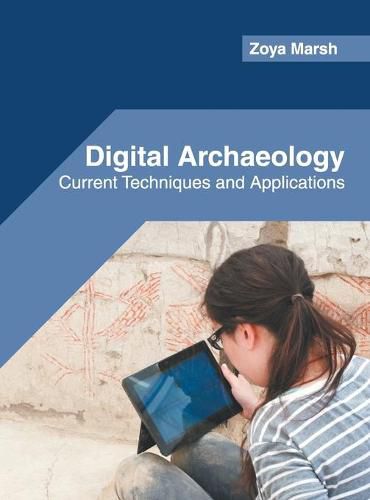Readings Newsletter
Become a Readings Member to make your shopping experience even easier.
Sign in or sign up for free!
You’re not far away from qualifying for FREE standard shipping within Australia
You’ve qualified for FREE standard shipping within Australia
The cart is loading…






This title is printed to order. This book may have been self-published. If so, we cannot guarantee the quality of the content. In the main most books will have gone through the editing process however some may not. We therefore suggest that you be aware of this before ordering this book. If in doubt check either the author or publisher’s details as we are unable to accept any returns unless they are faulty. Please contact us if you have any questions.
The application of information technology along with digital media to the field of archeology is known as digital archeology. There are various techniques used in this field such as laser scanning, augmented reality (AR), virtual reality (VR), 3-D printing and digital photography. Its two subdomains are computational archeology and virtual archeology. Computational archeology is also known as archeoinformatics. It studies the behavioral evolution and long-term human behavior using computer-based analytical methods. Virtual archeology deals with the reconstruction of buildings and artifacts using three dimensional models and multimedia solutions. All the information which is collected from field work is converted into digital format by visual archeologists. Digital archeology is an upcoming field of science that has undergone rapid development over the past few decades. This book covers in detail some existent theories and innovative concepts related to this field. Those in search of information to further their knowledge will be greatly assisted by this book.
$9.00 standard shipping within Australia
FREE standard shipping within Australia for orders over $100.00
Express & International shipping calculated at checkout
This title is printed to order. This book may have been self-published. If so, we cannot guarantee the quality of the content. In the main most books will have gone through the editing process however some may not. We therefore suggest that you be aware of this before ordering this book. If in doubt check either the author or publisher’s details as we are unable to accept any returns unless they are faulty. Please contact us if you have any questions.
The application of information technology along with digital media to the field of archeology is known as digital archeology. There are various techniques used in this field such as laser scanning, augmented reality (AR), virtual reality (VR), 3-D printing and digital photography. Its two subdomains are computational archeology and virtual archeology. Computational archeology is also known as archeoinformatics. It studies the behavioral evolution and long-term human behavior using computer-based analytical methods. Virtual archeology deals with the reconstruction of buildings and artifacts using three dimensional models and multimedia solutions. All the information which is collected from field work is converted into digital format by visual archeologists. Digital archeology is an upcoming field of science that has undergone rapid development over the past few decades. This book covers in detail some existent theories and innovative concepts related to this field. Those in search of information to further their knowledge will be greatly assisted by this book.